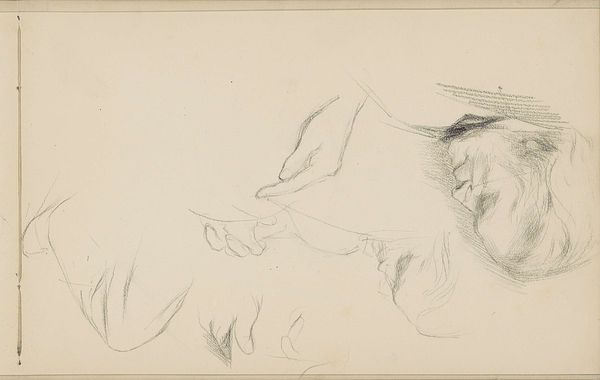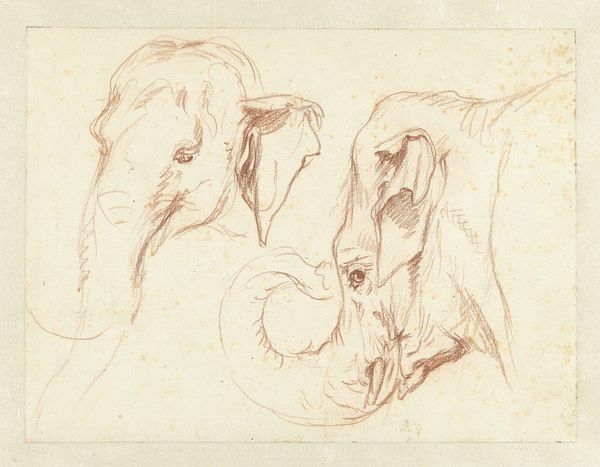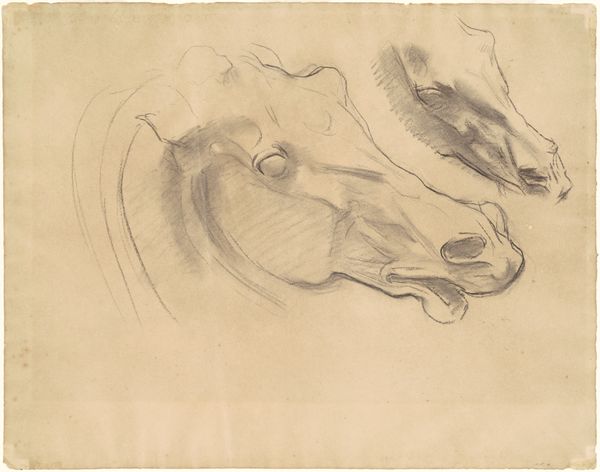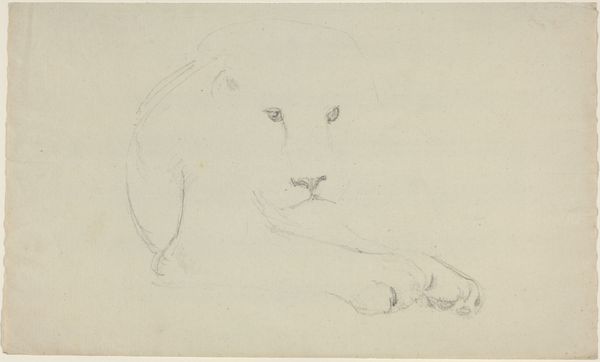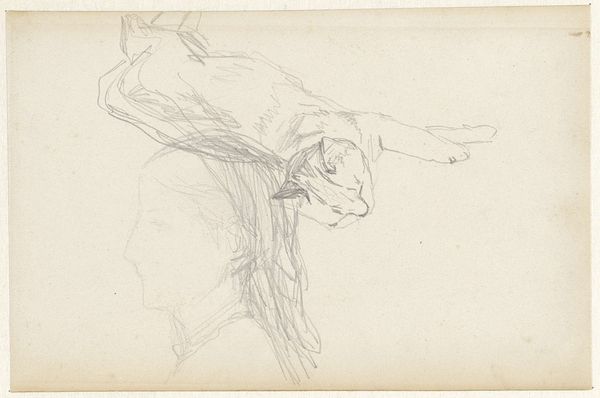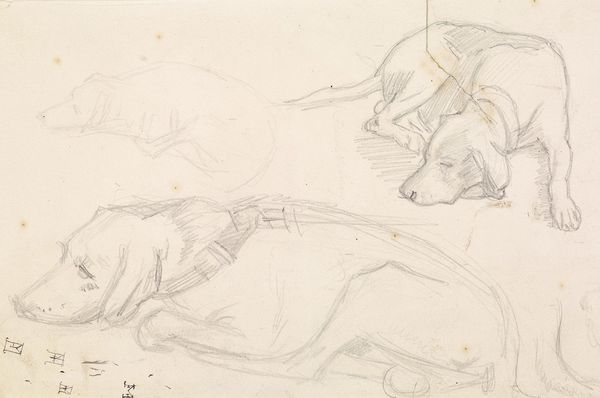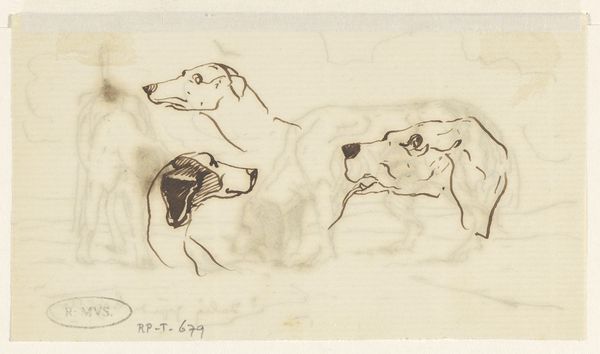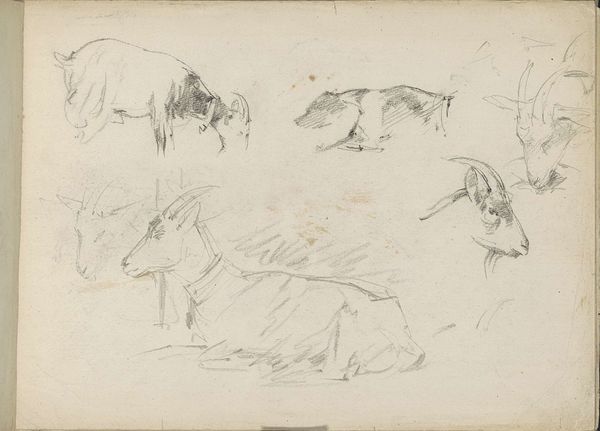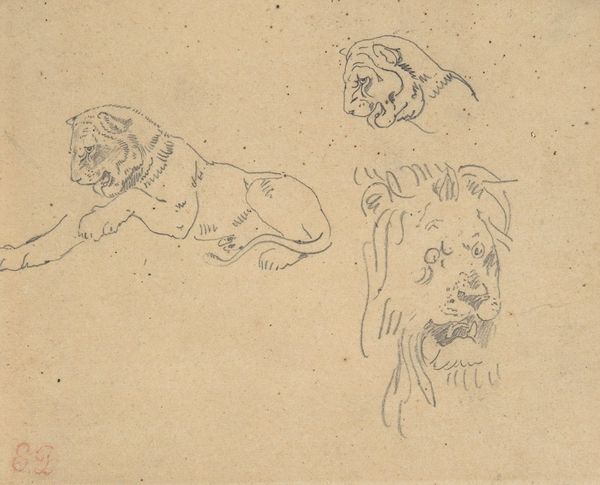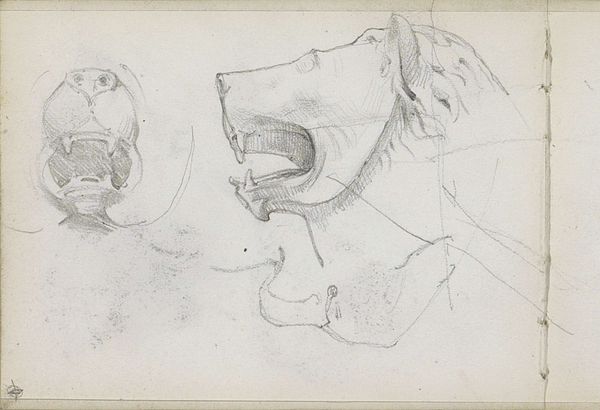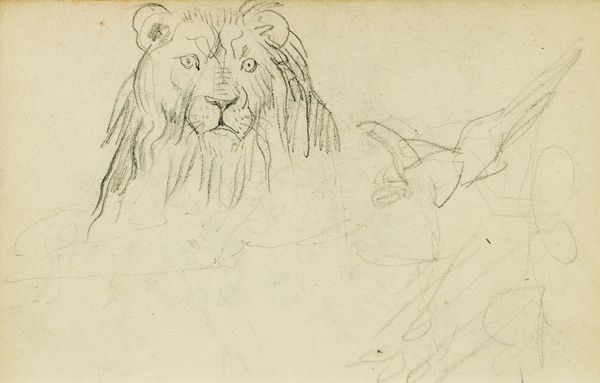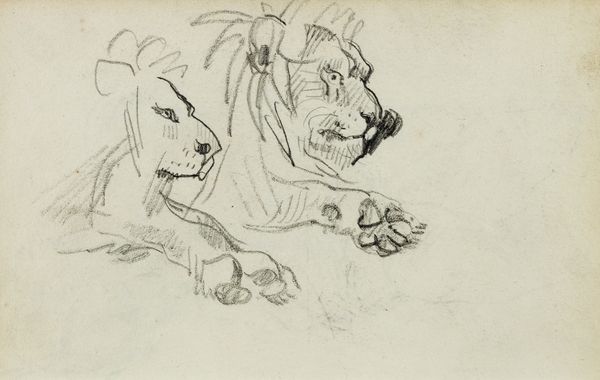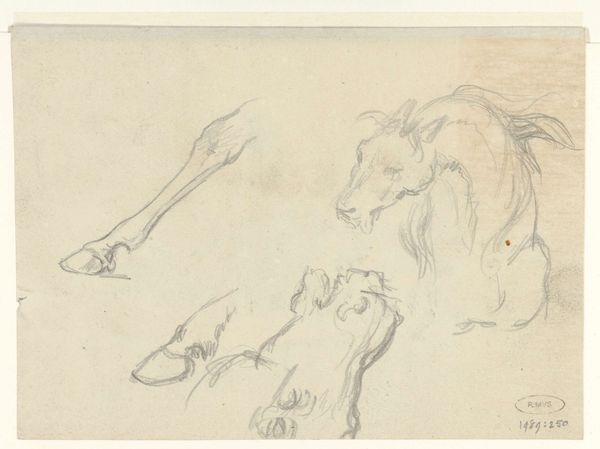
drawing, pencil
#
portrait
#
drawing
#
animal
#
pencil sketch
#
romanticism
#
pencil
Copyright: Public Domain: Artvee
Curator: Looking at "Sketchbook with views of Tours, France and its environs," from 1828 to 1829 by Eugène Delacroix, a quick, subtle pencil sketch of a lion, it almost feels like we’re peering over the shoulder of a Romantic artist. Editor: Yes, the immediate impression is one of spontaneity and intense observation. The fluidity of the lines, the unfinished quality. There's an undeniable power in its raw simplicity. Curator: Absolutely. It's fascinating to think about the role of exotic animals like lions in the Romantic imagination. They embodied a kind of untamed, natural power that contrasted with the order and reason that had defined the Enlightenment. Editor: The way he’s rendered the musculature around the lion’s jaw, even with these light touches, communicates volumes. Also, it seems he’s made the most effort and articulation around the eye itself, focusing attention there. The strategic use of shading directs our focus, guiding us to really notice the intent in that gaze. Curator: Precisely. Think of the social context. Lions were rare, generally confined to zoos or private menageries. Delacroix's access to these animals speaks to his social standing and also reflects a burgeoning fascination with the natural world—an interest the public shared through visits to such places. It underscores the privilege inherent in the artistic pursuit of these images. Editor: It makes me wonder, however, about his deliberate omissions, doesn’t it? What meaning can be found in what is left unsaid by the work itself? Curator: That’s an excellent point; one can ask whether his decisions reflect both the power structures of the time, but also his artistic interpretation of exotic nature. It provides a compelling entry point into understanding Romanticism. Editor: It really allows one to consider Romantic-era aesthetic priorities by letting viewers observe Delacroix's drawing processes and the ways they contribute to a more expressive emotional interpretation of nature, as well as a greater philosophical consideration of light and shadow.
Comments
No comments
Be the first to comment and join the conversation on the ultimate creative platform.
